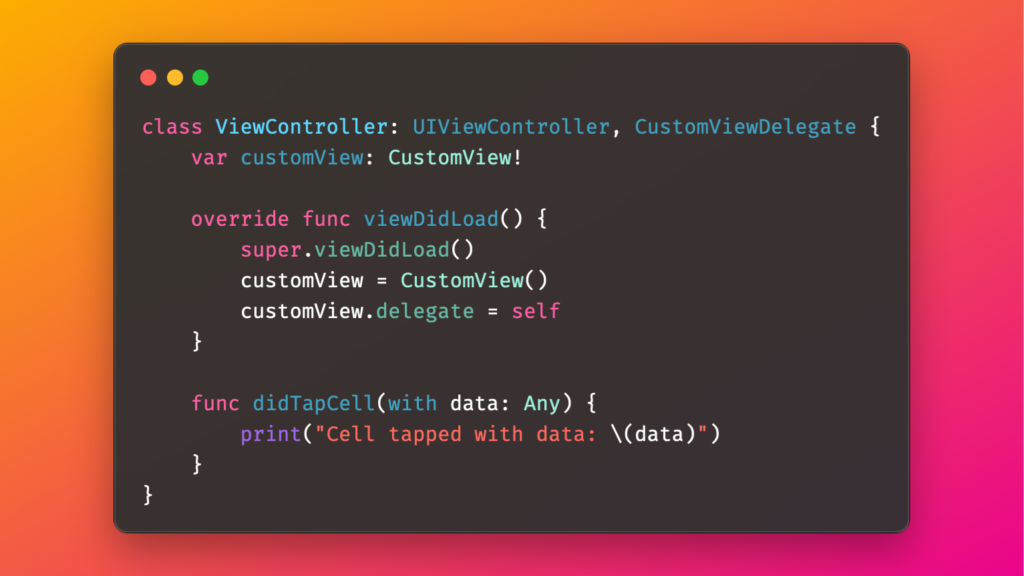Swift is a powerful and flexible programming language used to develop iOS, macOS, watchOS, and tvOS applications. One of the key features of Swift is the use of protocols and delegates. These two programming concepts are closely related and work together to allow for modular and scalable software design.
A protocol in Swift is a blueprint that defines a set of methods, properties, and other requirements that a class or struct must implement. It acts as an interface between objects, allowing them to communicate and exchange data without being tightly coupled.
A delegate, on the other hand, is an object that acts on behalf of another object. Delegates are used to implement the delegation design pattern, where an object delegates certain responsibilities to another object.
Here’s a simple example to help illustrate the use of protocols and delegates in Swift. Let’s say we have a custom view that displays a table of data. The custom view has a delegate property that is used to inform the delegate when a table cell is tapped.
First, we define a protocol that the delegate must conform to. The protocol defines a method that the delegate must implement, which will be called when a cell is tapped.

Next, we create a custom view that has a delegate property and implements the protocol. The custom view will call the didTapCell method on the delegate when a cell is tapped.

Finally, we create an object that conforms to the CustomViewDelegate protocol and sets itself as the delegate of the custom view.

In this example, the ViewController acts as the delegate for the CustomView. When a cell is tapped, the CustomView calls the didTapCell method on the delegate, which is implemented by the ViewController.
Protocols and delegates are essential tools in Swift programming that allow developers to create reusable, flexible, and scalable code. By defining protocols, developers can enforce a common interface between objects, making it easier to change and extend the behavior of those objects. By using delegates, developers can create objects that can act on behalf of others, making it easier to manage complex interactions between objects.
In conclusion, protocols and delegates are key concepts in Swift programming that allow developers to create modular and scalable software. By understanding and using protocols and delegates, developers can create software that is easy to maintain, test, and extend.
